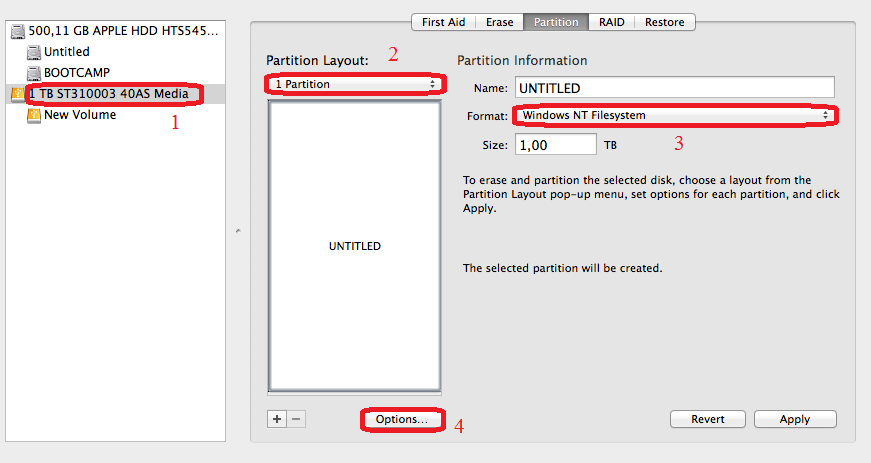
- Partition flash drive for mac and windows how to#
- Partition flash drive for mac and windows for mac#
- Partition flash drive for mac and windows mac os x#
Partition flash drive for mac and windows how to#
How to install Lightroom Presets onto your phone.
Partition flash drive for mac and windows for mac#
Guide: Formatting a USB Flash Drive for Mac & PC Compatibility Apple World Today is a trusted source for news, information and analysis about Apple and its products. Our staff consists of experienced writers who live and breathe Apple products every day. AWT publishes news stories, credible rumors and how-to's covering a variety of topics daily.Īs a trusted tech blog, AWT provides opinion and analysis on the news in addition to the facts. Apple World Today brings together veteran Apple bloggers to a new venue for news, reviews, how-tos, and community. Your purchase of items from Amazon benefits and supports Apple World Today through affiliate payments. APM is an older, Mac-only partition scheme.Macs and PCs use different file systems, which can make it tricky to put data from your Mac on a flash or hard drive and give it to a Windows user. You’ll also be asked to choose between a partition scheme: GUID Partition Map, Master Boot Record, or Apple Partition Map. RELATED: What's the Difference Between GPT and MBR When Partitioning a Drive? It’s not natively supported on many Linux distributions, but you can install exFAT support on Linux.įor external drives, it almost always makes sense to format in ExFAT, unless you’re using the drive for Time Machine. ExFAT is the ideal cross-platform file system. You should use this file system if you may share the drive with Windows PCs and other devices like the PlayStation 4 and Xbox One consoles. ExFAT: ExFAT is almost as widely compatible as older FAT file systems, but doesn’t have the limitations.MS-DOS (FAT): This is the most widely compatible file system, but it has some limitations–for example, files can only be 4GB or less in size each. Avoid this file system unless you have a device that requires FAT32.OS X Extended (Case-sensitive, Journaled, Encrypted): This is the same as the standard OS X Extended (Case-senstiive) file system, but with encryption.You’ll have to enter a password, and you’ll need to provide that password whenever you connect your drive to your Mac. OS X Extended (Journaled, Encrypted): This is the same as the standard OS X Extended file system, but with encryption.This option exists because it matches the traditional behavior of UNIX and some people might need it–don’t select this unless you know you need it for some reason.
Partition flash drive for mac and windows mac os x#
By default, Mac OS X doesn’t use a case-sensitive file system.


:max_bytes(150000):strip_icc()/ScreenShot2020-07-02at10.45.55PM-32e744eafa414af0b38989bcf0ae77bf.png)
This file system is necessary if you plan on using the drive for Time Machine backups–otherwise, you’ll want to use exFAT for maximum compatibility.

RELATED: What's the Difference Between FAT32, exFAT, and NTFS? You’ll need to choose between several file systems: You’ll be asked to provide a name for the disk, which will appear and identify the disk when you connect it to a Mac, PC, or another device. Select the drive by clicking its name.Ĭlick the “Erase” button after selecting the entire drive to erase the entire drive and create a single partition on it. Your connected drives will appear under “External” in the Disk Utility’s sidebar. You can also open a Finder window, select “Applications” in the sidebar, and head to Utilities > Disk Utility.


 0 kommentar(er)
0 kommentar(er)
